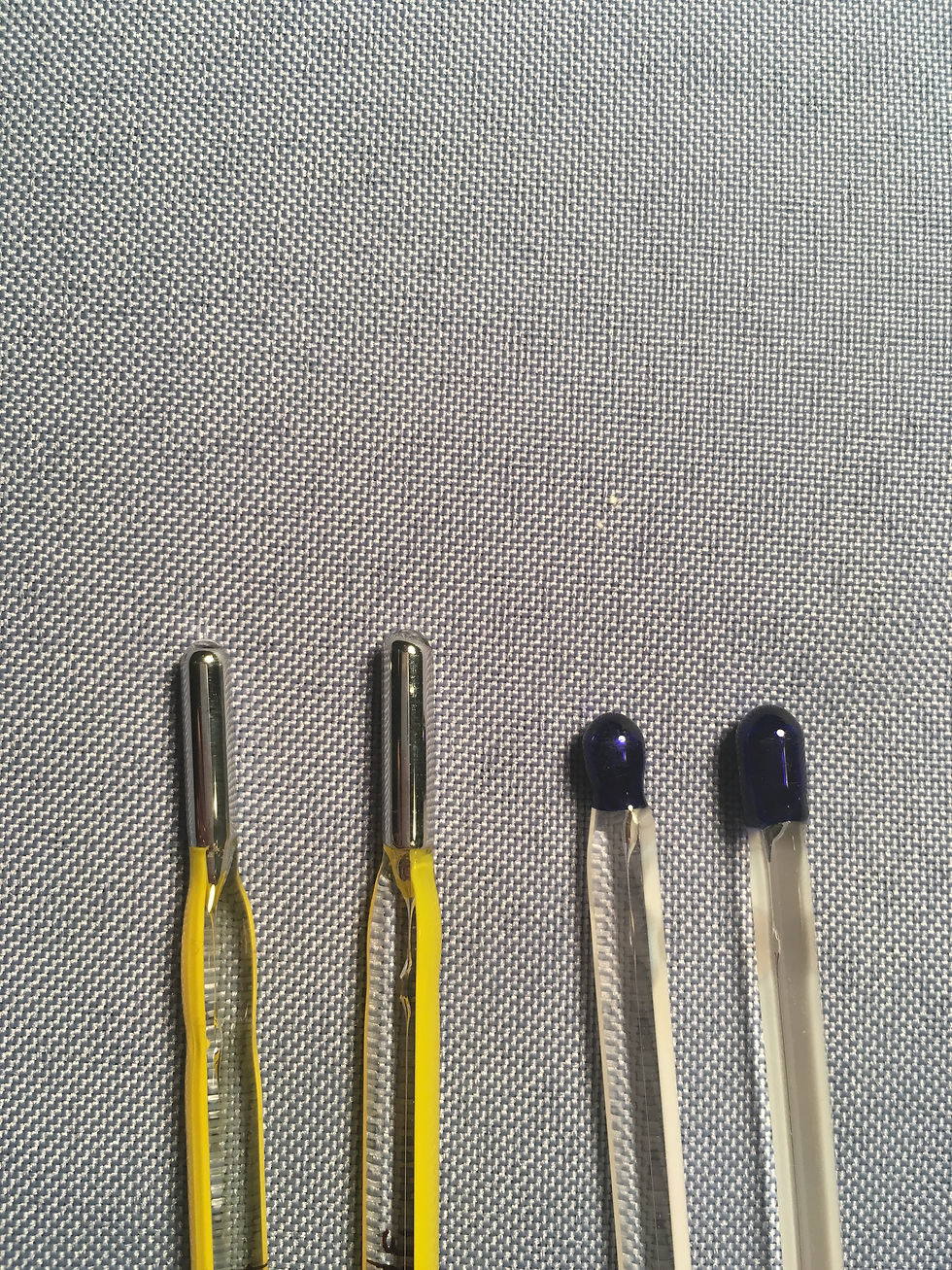Thermometer Photo Gallery
A Look at the Thermometer Collection of the Victoria General Nursing Alumni Archives
All of the pictured thermometers in this gallery are artefacts at the Victoria General Nurses’ Alumni Archives. The variety of artefacts showcases oral vs. rectal thermometers, as well, adult vs. children’s thermometers.

This Thermometer was used during brain operations and was used to ensure that the rain fluid di not rise too high or too low in temperature.


This thermometer is a special case as it is accompanied by a silver case. This case is equipped with a chain and clip so that it could be attached directly to the nursing uniform. This personal thermometer, may or may not have been cleaned before each use depending on the period of time it was in use; a likely hood if quick sanitation between uses is likely with this one as it heralds from the 20th century.

This image clearly indicates the difference between oral and rectal thermometers. To Learn more about the difference read below.





This is another example of personal thermometer carrying cases that nurses used to ensure they always had a thermometer on them.





This thermometer set would be kept by a patient’s bedside and may have contained a fluid for sanitation to be used in storing the thermometer.

The care for thermometers guidelines reads: 1)Wash in green soap, rinsed dried 2) Return to set after washing holder and rewash in alcohol


Where can you take Temperature?
There were several options for everyday temperature recording. They included:
The mouth, the armpit, the rectum, the vagina, and in the late 20th century this expanded to the ear and the skin.

Oral vs. Rectal Thermometers
How to tell the difference
The main physical difference between oral and rectal thermometers are the bulbs (the silver ends). Rectal thermometers have a rounder bulb head (two thermometers on the right above) whereas oral thermometers tend to have a longer thinner bulb head (two thermometers on the left above).

Celsius vs. Fahrenheit
Both Celsius and Fahrenheit are scales use to measure the change in temperature.
Celsius (°C) is based off the freezing and boiling points of water.
Fahrenheit (°F) is based off the freezing point of a water/ice/salt mixture and the normal body temperature.
Nurses and Doctors were not to convert between the two scales until most of the world converted to the metric system.